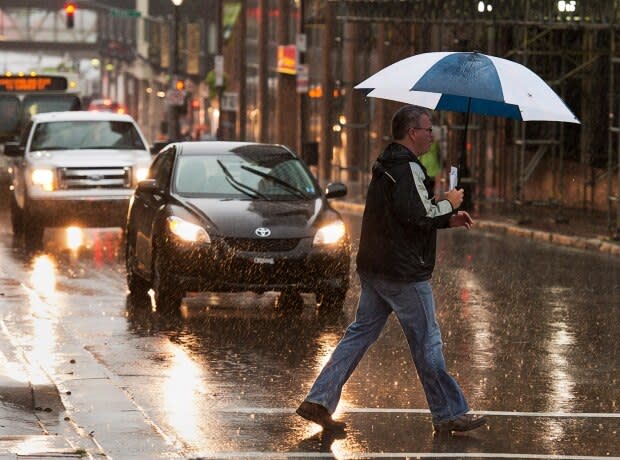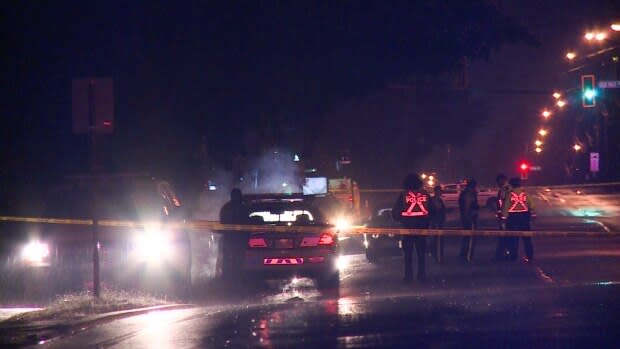Pedestrian injuries double this time of year, ICBC says
ICBC is urging drivers to be cautious of pedestrians amid slippery road conditions and fewer daylight hours.
Pedestrian injury rates nearly double between October and January, according to ICBC. About 1,200 walkers are injured each year during the fall months, compared to about 670 people between May and August.
According to ICBC road safety co-ordinator Joanne Bergman, most crashes — about 75 per cent — occur in the afternoon rush hour.
"Most likely, it's people that are trying to get home. They're not paying attention. They maybe had a busy day at work — whether they're in their car or as a pedestrian," Bergman told CBC News. "It's a busy time for them.
"The weather tends to get a little bit worse as the day goes on," she added.
The Crown corporation has launched an awareness campaign, encouraging both drivers and pedestrians to be mindful of road conditions — and watch out for hazards.
On average, more than 50 pedestrians in B.C. are killed in motor vehicle crashes each year. The issue has prompted some advocates to call for slower speed limits in residential areas.

Factors involved
Bergman says distracted driving is among the major factors contributing to the annual spike. Drivers are being urged to put the phone down, particularly in dark, damp weather.
Most collisions occur at intersections, when pedestrians are crossing the street — often when they have the right of way.
Those crossing the street are advised to refrain from looking at their phone — and take off their headphones.
Wearing bright and protective clothing can also prevent an avoidable crash, said Bergman.

Curbing injuries
Sandy James, a safe walking advocate and former City of Vancouver planner, says October to November is "the danger time" but notes the numbers are also reflective of poor driving habits in B.C.
"Here we get so much rain and a lot of gloom, and people don't drive for the conditions," said James. "People don't change their driving habits to adapt to the conditions.'
James is one of many advocating for reduced speed limits in residential areas across the province. Currently, speed limits are set to 50 km/h within municipalities, according to the province's Motor Vehicle Act.
James says reducing speeds to 30 km/h on non-arterial streets could reduce the number of crashes and improve the overall survivor rates for pedestrians struck.
"If you're hit at 50 km/h, you have a [20] per cent chance of surviving as a pedestrian at that speed. If you're hit at 30 km/h, that increases to a 90 per cent chance," she said.
"And the slower speed gives the driver much more reaction time," she said.
The City of Vancouver recently passed a pilot project that will examine reduced speed zones.
The Union of B.C. Municipalities has asked province to amend the Motor Vehicle Act so municipalities have the authority "to institute blanket speed zones in residential areas."


